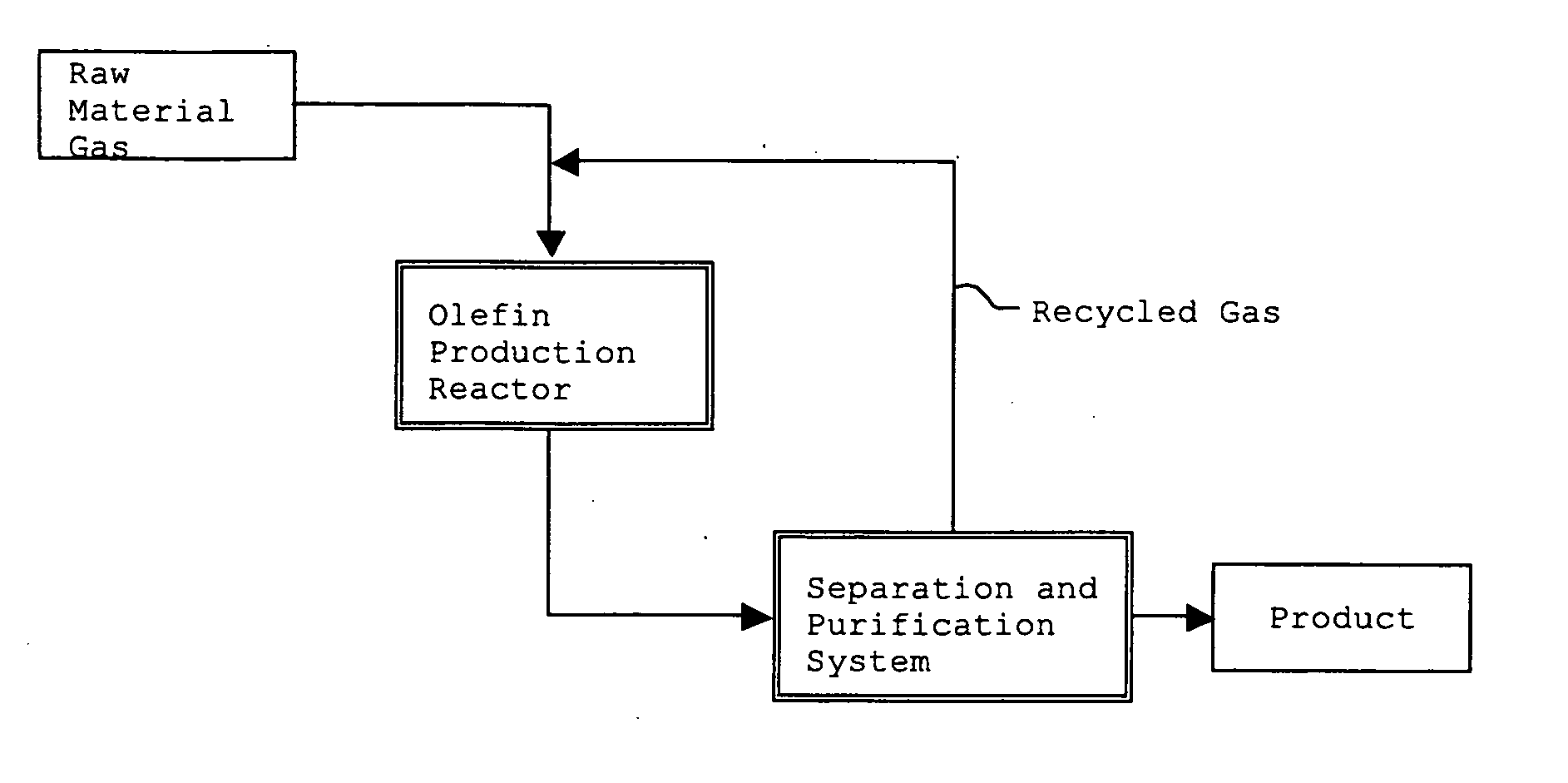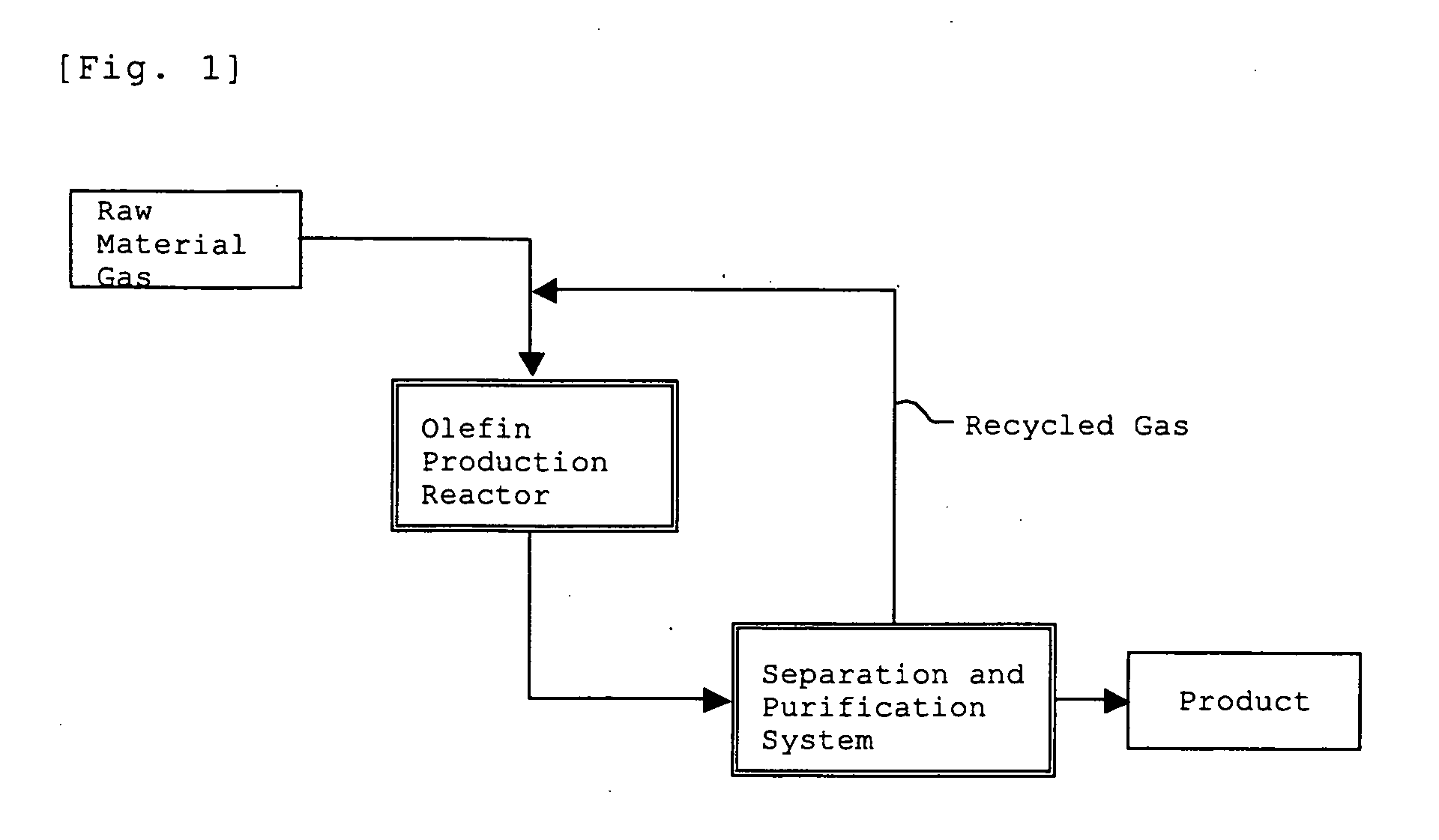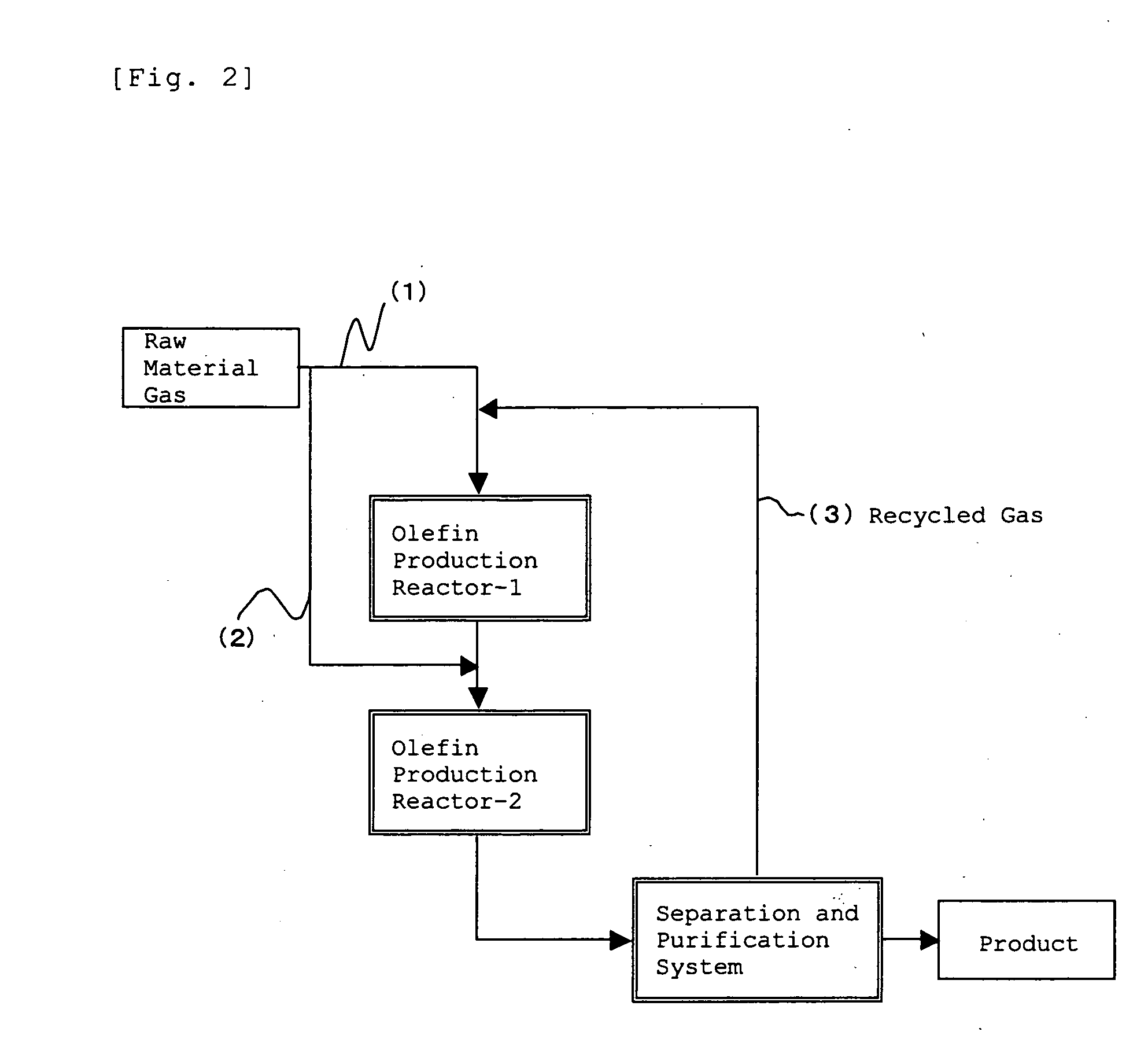Method for Production of Lower Olefin
a technology of olefin and zeolite, which is applied in the field of production methods of lower olefins, can solve the problems of inability to obtain sufficient catalyst activity and life after regeneration, irreversible deactivation is the disappearance of active sites, and the zeolite catalyst is gradually deactivated, etc., and achieves high selectivity of propylene, high yield, and high yield
- Summary
- Abstract
- Description
- Claims
- Application Information
AI Technical Summary
Benefits of technology
Problems solved by technology
Method used
Image
Examples
example 1
Preparation of Zeolite Catalyst A
[0137]An aqueous solution was prepared by dissolving a zeolite raw material solution consisting of 9.50 g of Al (NO3)3.9H2O and 10.92 g of Ca (CH3COO)2.H2O in 750 g of water. To the aqueous solution were added a solution in which 500 g of Cataloid Si-30 Water Glass (manufactured by Catalysts & Chemicals Ind. Co., Ltd.) is dissolved in 333 g of water, 177.5 g of 6% by mass of an aqueous NaOH solution, 317.6 g of 21.3% by mass of an aqueous tetrapropylammonium bromide solution and 15.0 g (corresponding to 10% by mass of the amount of a zeolite catalyst synthesized without adding a seed crystal) of an ammonium-type MFI structure zeolite (manufactured by Zeolyst International, Si / Al atomic ratio is 70) having an average particle size of 0.5 μm as a zeolite seed crystal under stirring to obtain an aqueous gel mixture.
[0138]Then, the aqueous gel mixture was placed in an autoclave of 3 L and the hydrothermal synthesis was carried out by stirring under the s...
example 2
[0147]The catalyst used in Example 1 the life of which expired was regenerated by calcining at 550° C. for 10 hours in an air flow, and the lower olefin production was carried out in a similar manner as in Example 1 except that the regenerated catalyst obtained was used. The results are shown in Table 1.
preparation example 1
Preparation of Zeolite Catalyst B
[0162]An aqueous solution was prepared by dissolving a zeolite raw material solution consisting of 9.50 g of Al (NO3)3-9H2O and 10.92 g of Ca(CH3COO)2.H2O in 750 g of water. To the aqueous solution were added a solution in which 500 g of Cataloid Si-30 Water Glass (manufactured by Catalysts & Chemicals Ind. Co., Ltd.) is dissolved in 333 g of water, 177.5 g of 6% by mass of an aqueous NaOH solution, 317.6 g of 21.3% by mass of an aqueous tetrapropylammonium bromide solution and 15.0 g (corresponding to 10% by mass of a zeolite catalyst amount synthesized without adding a seed crystal) of an ammonium-type MFI structure zeolite (manufactured by Zeolyst International, Si / Al atomic ratio is 70) having an average particle size of 0.5 μm as a zeolite seed crystal under stirring to obtain an aqueous gel mixture.
[0163]Then, the aqueous gel mixture was placed in an autoclave of 3 L and the hydrothermal synthesis was carried out by stirring under the self pres...
PUM
| Property | Measurement | Unit |
|---|---|---|
| molar ratio | aaaaa | aaaaa |
| molar ratio | aaaaa | aaaaa |
| molar ratio | aaaaa | aaaaa |
Abstract
Description
Claims
Application Information
 Login to View More
Login to View More - R&D
- Intellectual Property
- Life Sciences
- Materials
- Tech Scout
- Unparalleled Data Quality
- Higher Quality Content
- 60% Fewer Hallucinations
Browse by: Latest US Patents, China's latest patents, Technical Efficacy Thesaurus, Application Domain, Technology Topic, Popular Technical Reports.
© 2025 PatSnap. All rights reserved.Legal|Privacy policy|Modern Slavery Act Transparency Statement|Sitemap|About US| Contact US: help@patsnap.com



